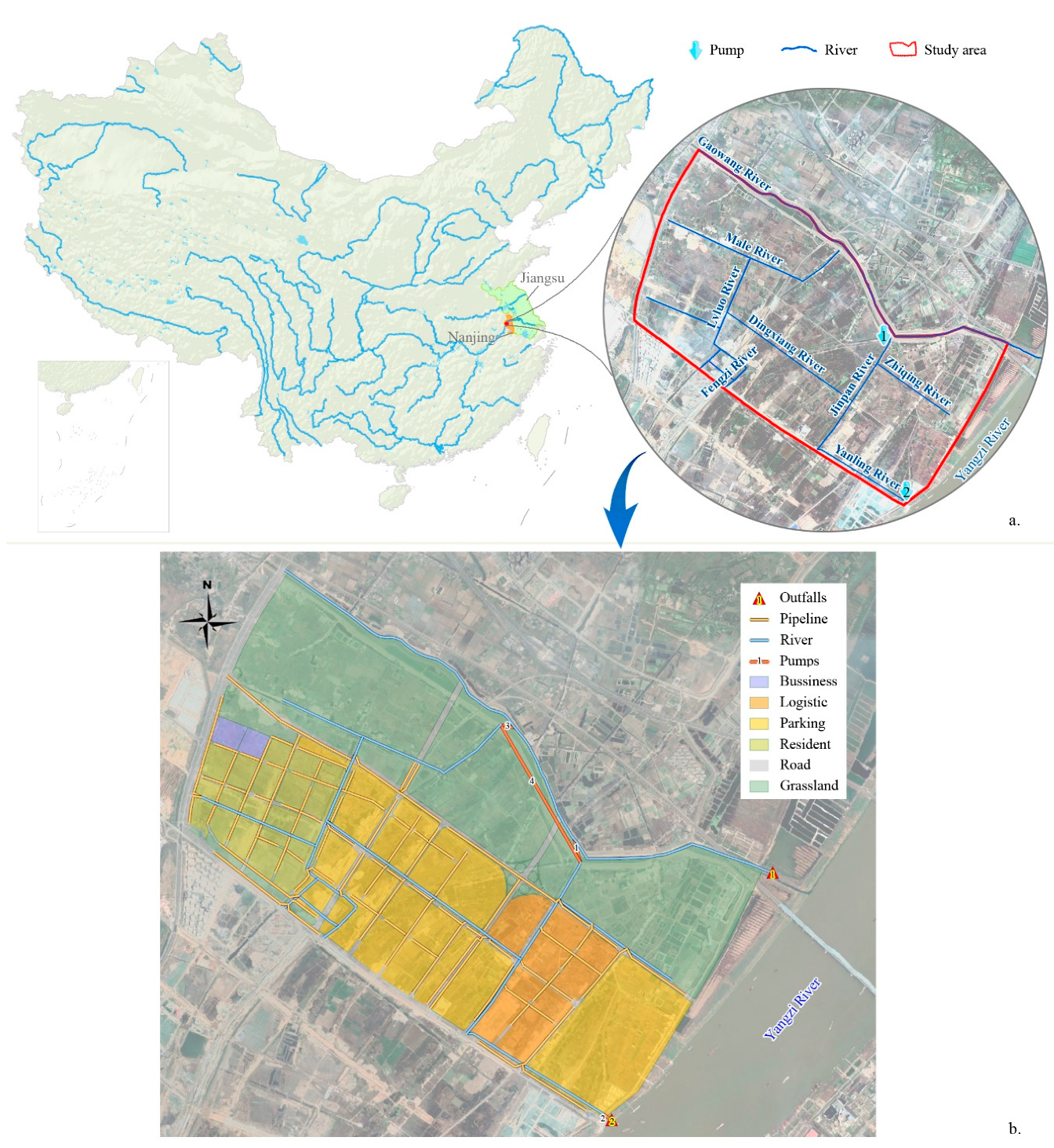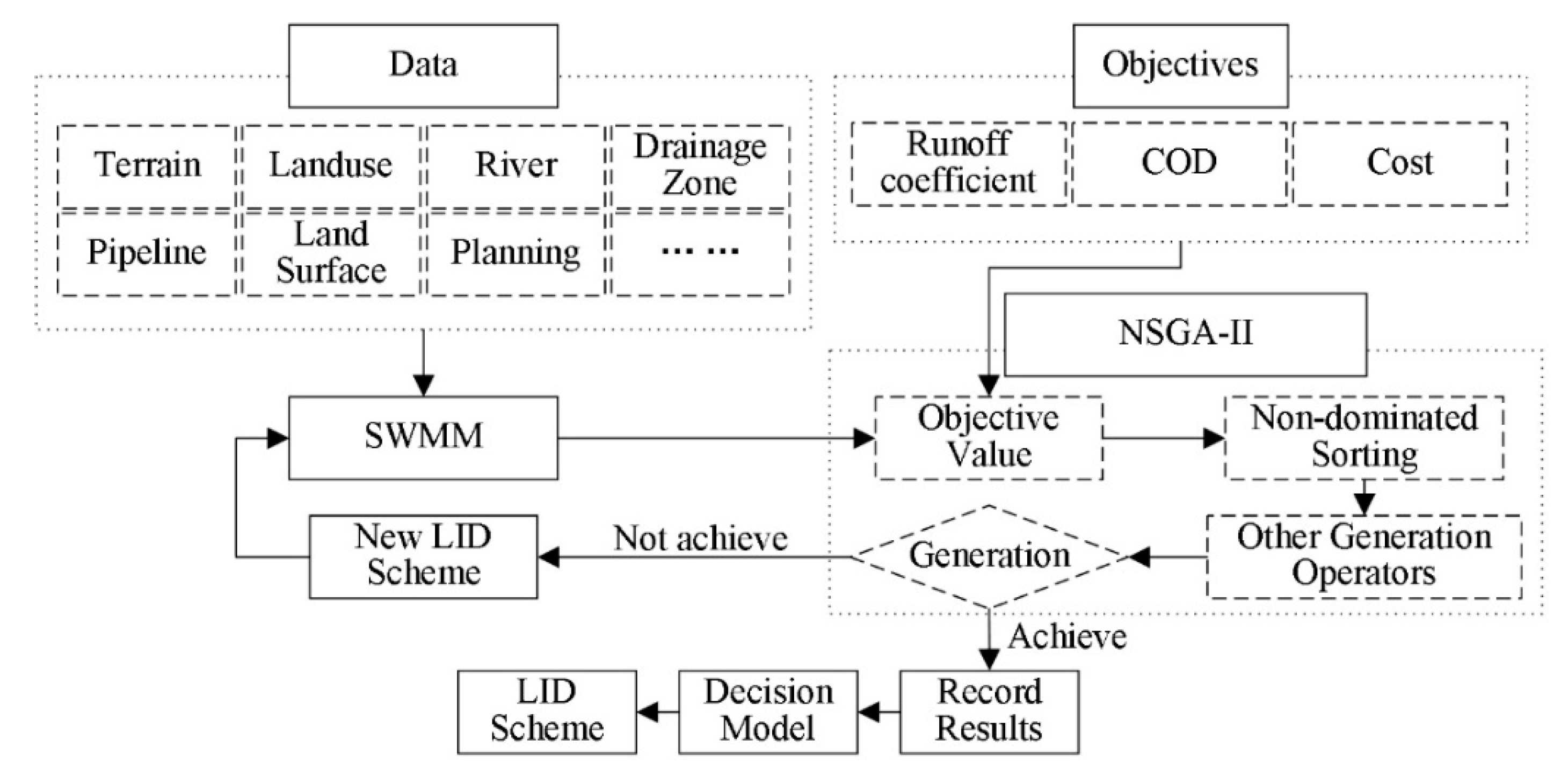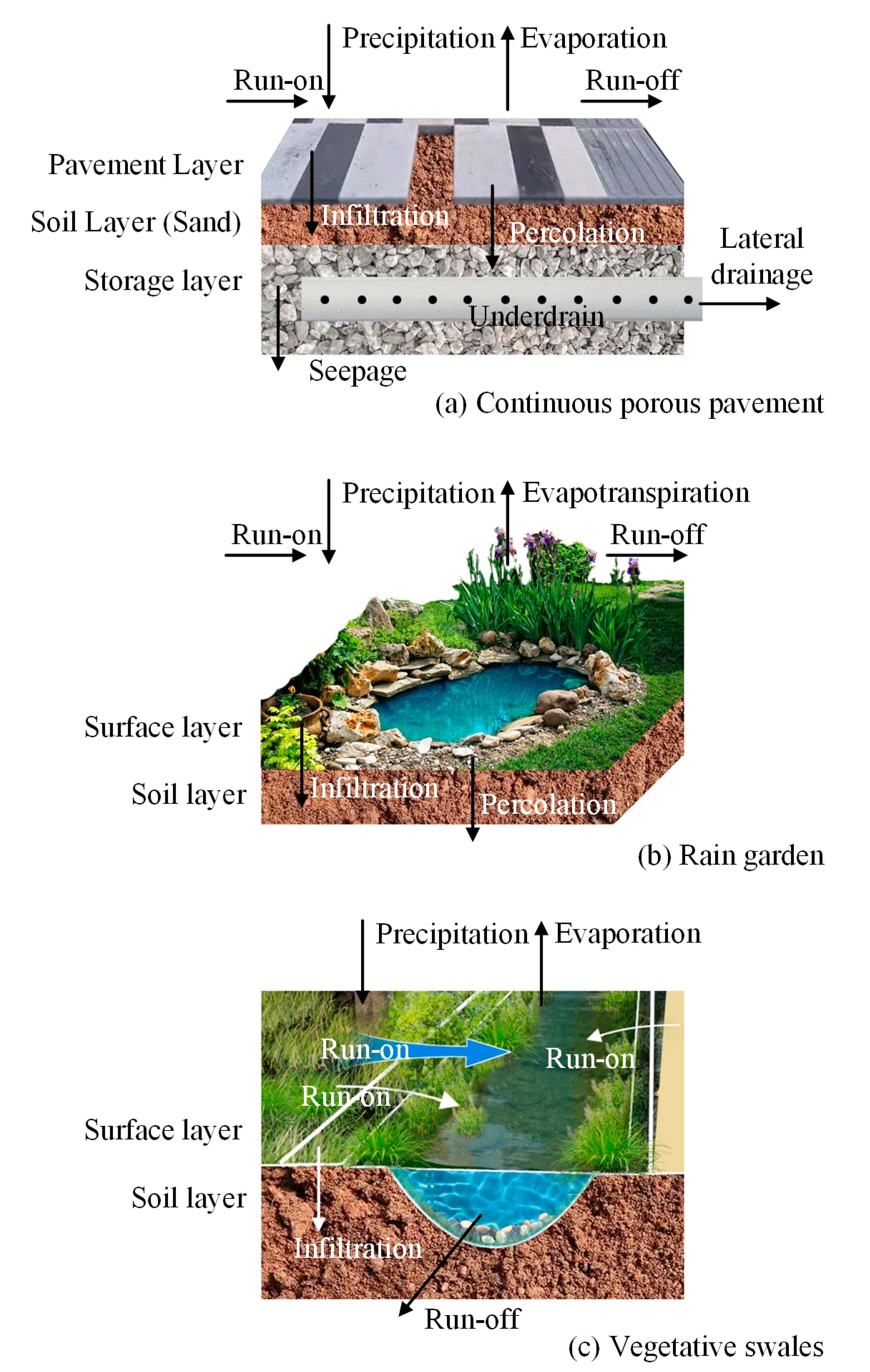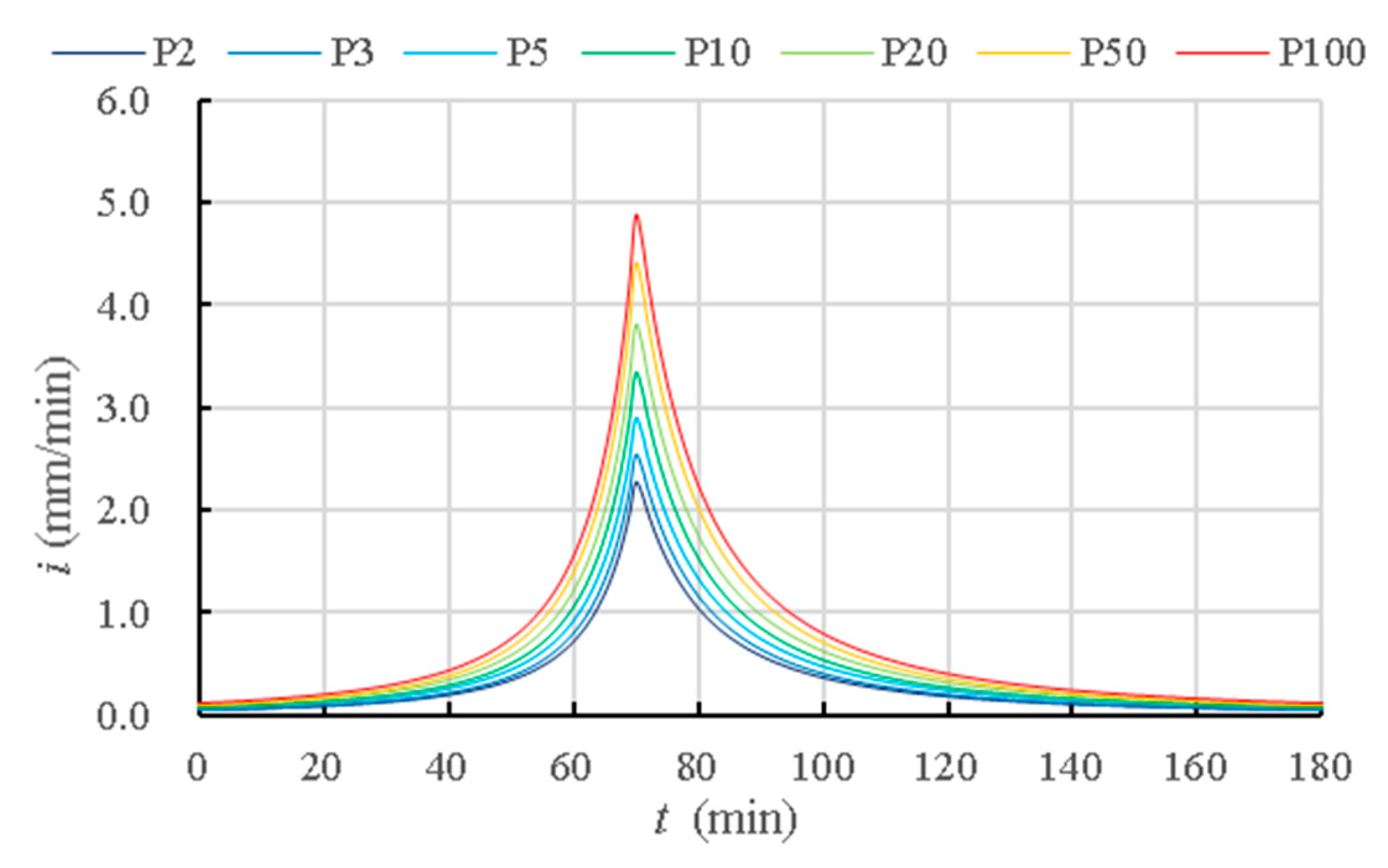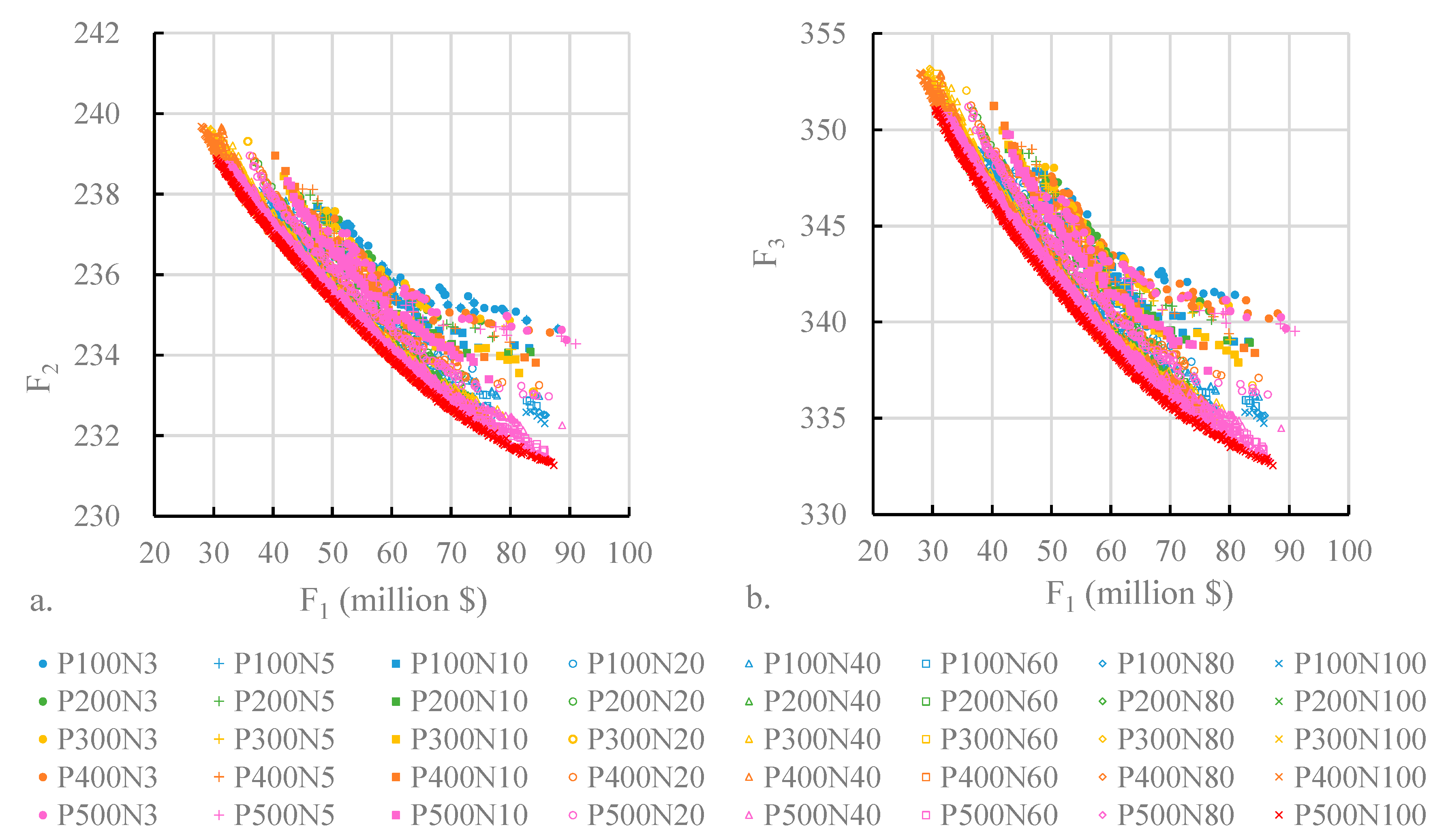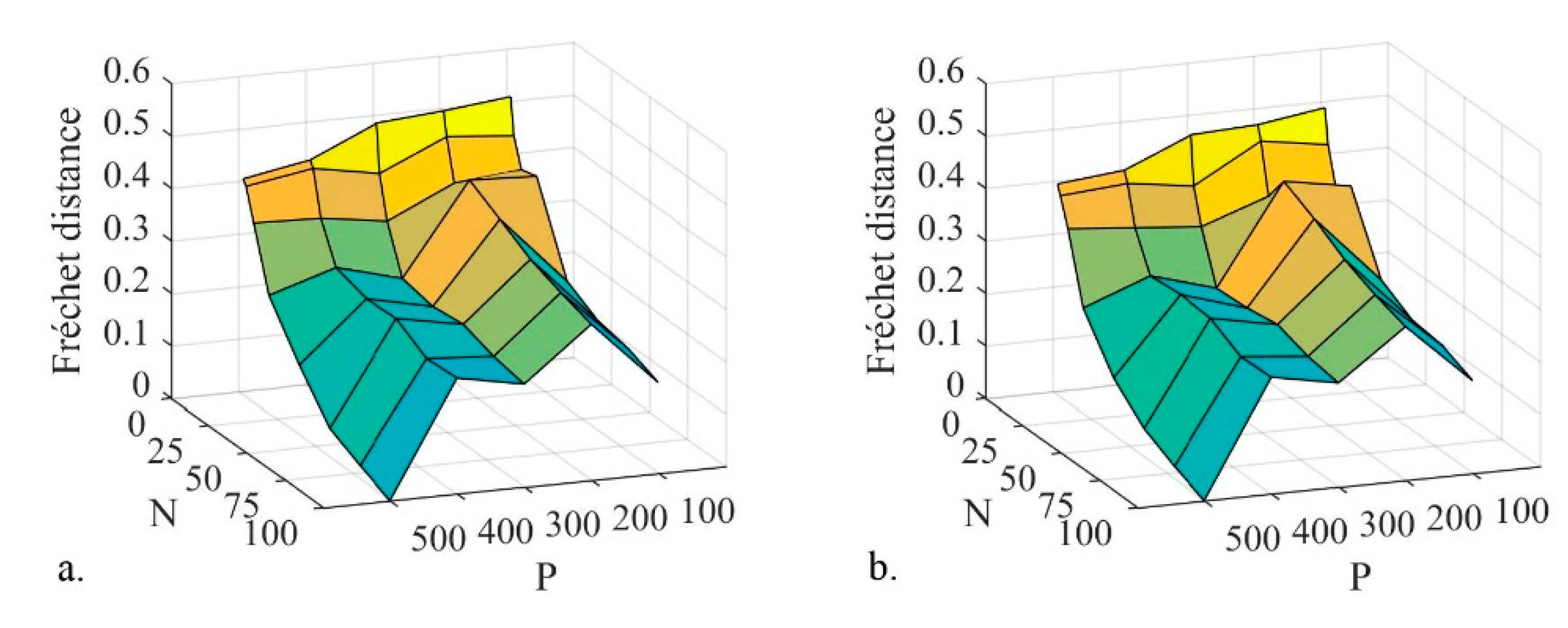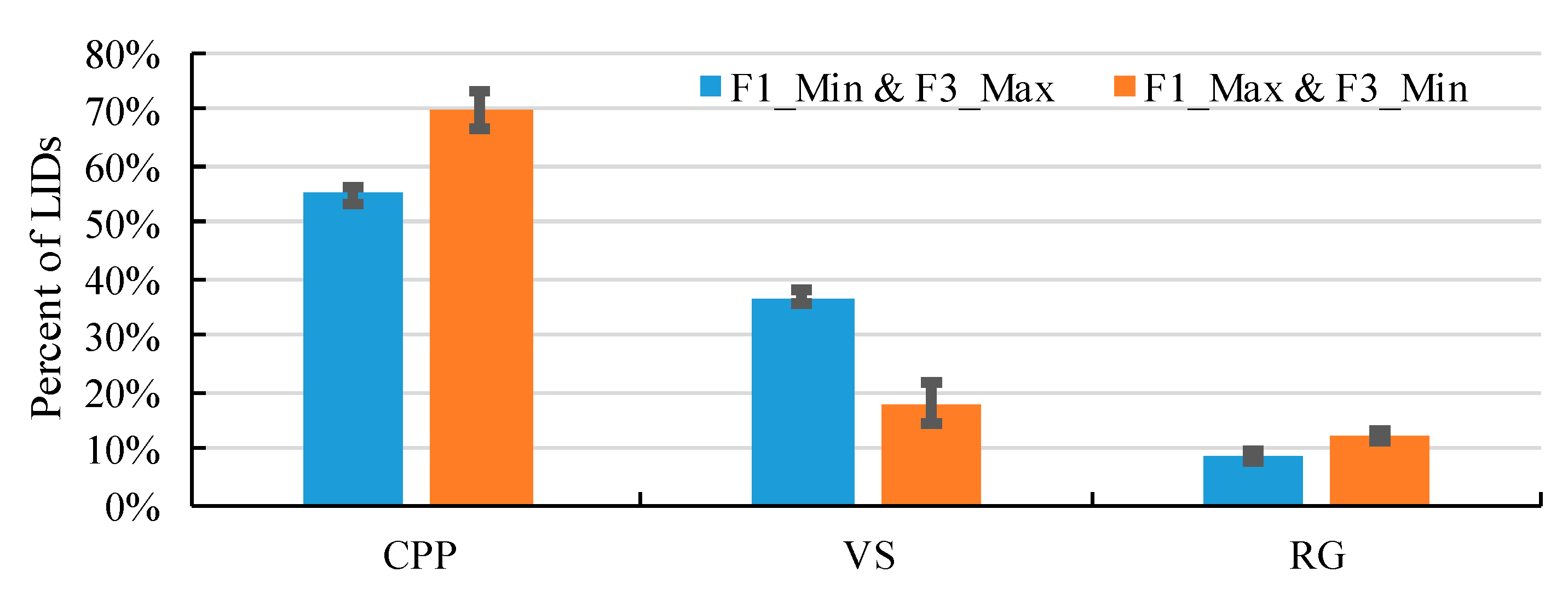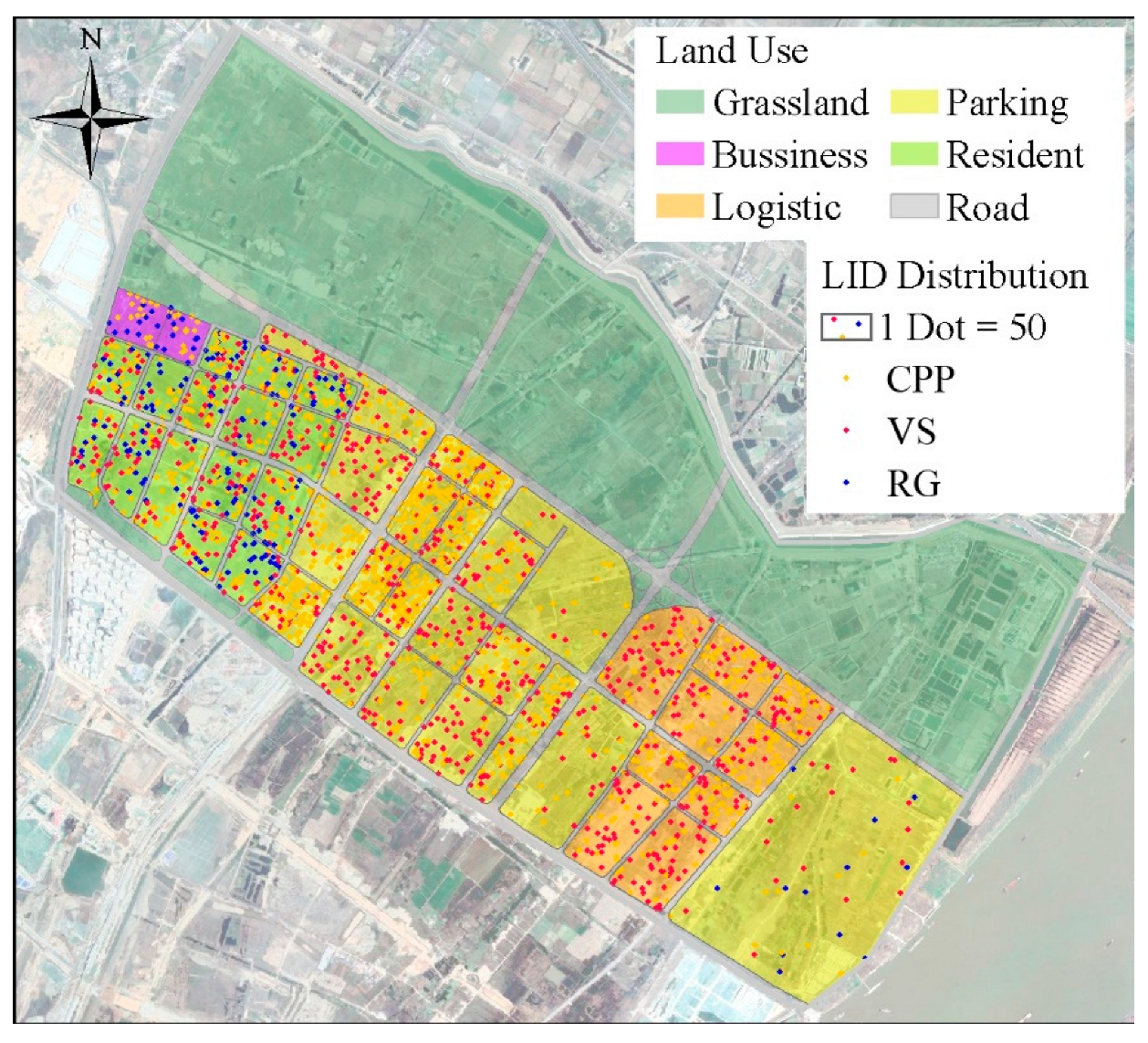1. Introduction
Urbanization has modified the land surface greatly by reducing vegetative cover and increasing impervious urban watersheds. It has led to precipitation infiltration decrease and converts runoff which could impact both the quantity and quality of urban runoff [
1]. There are many storm water management conceptions, such as low impact development (LID) [
2], best management practices (BMPs) [
3], sustainable urban drainage system (SUDS) [
4], green infrastructures (GIs) [
5], and water sensitive urban design (WSUD) [
6]. These conceptions have been considered as efficient protection ways for water quality, flood detention, and ecology protection in urban areas. The LID conception has been implemented in many metropolises of China to control runoff and pollution [
7,
8]. The Chinese government has promoted the sponge city conception in urbanization to manage the storm water since 2010. Many laws and theories are established to guide the storm water management [
9,
10], and many researchers contribute a lot of effort to improve LID facilities [
11]. The proper prediction of urban runoff quantity and quality in to-be-developed areas is essential for preventing city flooding, reducing storm water pollution, and deciding city planning.
Computer modeling is helpful to understand the current and future impact of land use changes on urban water bodies, and it could be used to design and optimize storm water management [
12,
13,
14]. Bosley (2008) gives an in-depth review of the common models [
15]. The hydrological process in LID controls are analyzed by many researchers with computer models [
13]. In addition to the assessment of common hydrological processes, climatic changes, biological process, chemical process, and uncertainties in decision-making are also considered in recent studies of storm management. Wang et al. (2019) assessed the hydrological effects of bioretention cells to control urban storm water runoff. Considering the climatic changes in a hypothetical urban catchment [
16], they examined the first flush with different storm management designs using the SWMM. Silva et al. (2019) analyzed the impact of urban storm water runoff on cyanobacteria dynamics in Lake Pampulha located in Belo Horizonte, Brazil [
17]. Rezaei et al. (2019) used the SWMM and collected field data to assess the impacts of LIDs on water quality and hydrology at the catchment scale in Kuala Lumpur, Malaysia [
18]. Raei et al. (2019) proposed a decision-making framework for GI planning to control urban storm water management considering various uncertainty [
14]; they combined a fuzzy multi-objective model and a surrogate model based on the calibrated SWMM to reduce the runtime.
The decision-making process of urban area low impact development is complicated because it could relate to multiple objectives of runoff control, such as volume reduction, water quality improvement, and LID cost-effectiveness. Some researchers tried to find an optimization scheme for the multi-objective problem using a multi-objective optimization technique combined with the hydrology model, the water quality model, cost-effectiveness analysis, and an optimization algorithm [
19,
20,
21]. Due to open-source features, robustness, and a low impact development (LID) module, the SWMM is commonly used and coupled with optimization algorithms [
22]. Optimization tools such as genetic algorithm (GA) [
23], a technique to order preference by similarity to an ideal solution (TOPSIS) [
24], particle swarm optimization (PSO) [
25], and simulated annealing (SA) [
26] were combined with SWMM to find the optimization scheme for urban drainage planning and design. As a popular tool, the non-dominated sorting genetic algorithm II (NSGA-II) [
27] has been widely used for solving multi-objective optimization problems, and it is very efficient for multi-objective optimization studies [
28]. Zare et al. (2012) used NSGA-II to set up a multi-objective optimization model for combined quality–quantity urban runoff control [
29]. Raei et al. (2019) [
14] combined the NSGA-II and fuzzy α-cut technique to form a fuzzy optimization approach. Macro et al. (2019) connected the SWMM with the existing Optimization Software Toolkit for Research Involving Computational Heuristics (OSTRICH) to reduce the combined sewer overflows for the city of Buffalo, New York, USA [
30]. With the help of these heuristic optimization algorithms, the Pareto front is composed of large amounts of optimal LID schemes and could be given to decision makers. Though all these schemes are theoretically optimal solutions, it is difficulty for decision makers to choose the proper LID scheme based on their purpose. Almost all these multi-objective optimization techniques focus on finding the whole schemes of Pareto front for decision makers, but few studies bring a convenient method for decision makers to select suitable schemes from a huge group of multi-objective optimization results.
The main objective of this study is to provide a method to find proper optimal LID planning alternatives from a large number of multi-objective optimization results by combining a decision-making algorithm with an integrated SWMM-NSGA II model. The SWMM model is used to simulate the hydrological, hydraulic, and water quality processes of the area under different LID scenarios. Then, it is integrated into the NSGA II to construct a SWMM-NSGA II model to find the multi-objective optimization LID plans. Finally, the structural decision-making approach for multi-objective system [
31] is combined with the SWMM-NSGA II to identify proper optimal LID planning alternatives from the multi-objective optimization results. The proposed framework was applied to an intending urban area in Nanjing. It was used to ensure maximum chemical oxygen demand (COD) load reduction, maximum runoff reduction, and minimum total relative cost.
4. Results and Discussion
4.1. The Results of Scheme Optimization and Selecting
We obtain the optimal LID schemes using the SWMM-NSGA II. The optimal processes are conducted for a 180-min designed rainfall with return periods of 2 years. Several conditions of different generations (N) and populations (P) are considered in this study to find the impact on the Pareto front from the parameters of the NSGA II. With a small generation and population, the fronts composed by the solutions are far away from the Pareto front, and the width of the fronts are narrow (
Figure 5). This means that NSGA II conducts a few search processes, and it is still difficult to approach the Pareto front with a small generation and population. As the population and generation increased, the fronts composed by the solutions are close to the Pareto front, and the width of the fronts become wide. It could be beneficial for the NSGA II to find the Pareto front with a bigger generation and population. However, this does not mean that a bigger generation and population are better and that the Pareto front could be found. If the generation was set at 100, the fronts of the solutions almost fell in the same line when the population increased from 300 to 500. This means that when the Pareto front was found, it could not improve the optimal with a bigger generation and population. In this study, we set the generation and population as 100 and 500, and the Pareto front is composed of all the 500 schemes (red × in
Figure 5).
In
Figure 5, when the
increased, both the
and
decreased. It means that spending more money on the LIDs is benefit for reducing urban inundation and runoff pollution. We also found that the low cost of LID corresponds to the low effect of reducing runoff and pollutant concentration.
With the SDA, a suitable scheme could be selected from the Pareto set composed of 500 schemes. The entropy weights of the three objectives are 0.2979, 0.3544, and 0.3477. The weight of the is smaller than the weights of and , which means that the entropy weights are beneficial for the objects and . Then, scheme No. 94 is selected as the most suitable LID scheme because it has a minimum eigenvalue of 17.36. The is about 78 million CNY; the is 231.89, and the is 334.01. The area of CPP, VS, and RG are 14.18 ha, 4.81 ha, and 2.14 ha.
The SWMM model is responsible for describing the physical feature of an urban area. When the SWMM model of an urban area is settled, the physical features of the area are implied in the hydraulic and water quality outcomes. Then, these outcomes are provided to the NSGA II to select the optimal LID schemes based on the entropy weights calculated. Objectively, the entropy weights only show the importance of different optimization goals and are independent of scale and geographical features of the urban area.
The weight of the objectives in the SDA method could obviously affect the result. If we use the weights obtained using the entropy weight method, the scheme is selected objectively. However, people’s requirement might be the key factor in runoff and pollution management. We could change the weight to reflect the demand of the people in this method.
For example, the cost is a very important factor when deciding on the construction of urban infrastructures. When we try to reduce urban inundation or runoff pollution, the cost of LIDs is a vital constrain. A better reduction effectively results in a higher cost. But the fiscal revenue of an urban area is limited; this means that a manager should find the balance point between the reduction effective and cost. If we want to save more on the cost of the LIDs, we have to increase the weight of object . For instance, we could change the weight of from 0.2979 to 0.90. To keep the sum of the weight equal to 1, the weights of and should be reduced. In this study, we thought that and were equally important, so their weights were set as 0.05 and 0.05. With the new weights, scheme No. 42 is selected as the most suitable LID scheme to save more cost, because it has a minimum eigenvalue of 13.82. The is about 31 million CNY; the is 238.68, and the is 350.44. The area of CPP, VS, and RG are 6.76 ha, 4.31 ha, and 0.91 ha. Scheme No. 42 could cost 47 million CNY less than scheme No. 94. It also shows that the weights could significantly affect the selection result.
In fact, there are lots of factors that might affect the construction of urban infrastructures, such as cost, policies, environmental protection, land ownership, etc. The method in this study focuses on three brief goals and could provide the decision makers with the LID scheme for reference. The decision makers could then develop more detailed LID plans based on the results given using this method.
4.2. Influence of the NSGA II Parameters
The generation (N) and population (P) are the important parameters of the NSGA II, and they would affect the effect of finding the proper LID schemes. We set up a numerical test to find the influence of these two parameters. We calculate the LID schemes with 40 combinations of different generations and populations.
Both the increase in generation and population of the NSGA II could obviously lead to an increase in computing time (
Figure 6a). The computing time increases linearly with the product of P and N (
Figure 6b).
The generation and population have a great influence on the Pareto fronts. When the generation increases, the results of the NSGA II approach better Pareto fronts (
Figure 5). If the generation is the same, the Pareto fronts corresponding to different populations are almost gathered together in the middle, but the left and right sides of the Pareto fronts are slightly divergent. When the population increases, the curvatures of these Pareto fronts decrease, and the left and right sides of the Pareto fronts approach the front with the maximum population.
To evaluate the difference between different Pareto fronts with different combinations, we take the fronts as trajectories and use the Fréchet distance to evaluate the distance between the different trajectories [
51]. The trajectory data can be discrete or continuous, and the number of points composing the two trajectories does not have to be the same [
52]. We use the front (P = 500, N = 100) as the baseline. The other fronts are compared with the baseline front. The data of the fronts should be normalized before the Fréchet distance is calculated in order to eliminate dimensional differences. The Fréchet distance of different P and N are shown in
Figure 7.
Figure 7a shows the Fréchet distance of the fronts of
and
,
Figure 7b shows the Fréchet distance of the fronts of
and
. The tendency of both figures are almost the same. When P ≥ 300 and N ≥ 100, the Fréchet distance is smaller than 0.2, and the fronts are close to the baseline fronts. This means we use a smaller P and N to find the approximate optimum schemes and save on computing time. In this study, P = 300 and N = 100 could be used to find the approximate optimum schemes, and this could save about 4 h of computing time.
4.3. Influence of the Rain Type
The return periods could affect the Pareto fronts. The optimal processes are conducted for a 180-min designed rainfall with return periods of 2 years, 3 years, 5 years, 10 years, 20 years, 50 years, and 100 years. With the same
, the increase in return period of rainfall resulted in the increase in
and
. This has good agreement with the study conducted by Hai (2020) [
48]. The increments of
are smaller than the increments of
with the variation in return periods in this study. When the rainfall increases, more pollutants are washed off by the runoff. This causes the obvious increment of
. Hai (2020) [
48] found that the return period of the rainfall patterns which were utilized for the design of LID installment should not exceed 2 years.
Figure 8 shows that if the return period increases from 2 years to 3 years,
could not be reduced to the same level by just building more LIDs, which leads to cost increments. Cleaning the land surface might be the more efficient way to reduce the pollutants carried by the runoff.
The rainfall duration also affects the cost-effectiveness curves. The optimal processes are conducted for a 2-year rainfall period with durations of 5 min, 15 min, 30 min, 60 min, 90 min, 120 min, and 180 min. The long duration causes more runoff which exceeds the capacity of the LIDs. As the runoff increases, the
approaches 1, and the
approaches the maximal value. Then, the Pareto fronts of long durations are close to each other. For this study case, if the duration exceeds 15 min, this means that the LIDs schemes could not handle the runoff, and the cost-effectiveness curves cluster together. The longer the duration, the bigger the
; this is because more pollutants are washed off by the increased runoff.
Figure 9 shows that
and
could not be reduced to the same level by just building more LIDs which leads to cost increments when the duration increases a lot. It also shows that the LIDs could be ineffective for less frequent, heavier, and longer duration storms, and the LIDs might be taken as assistance measures for conventional runoff management practices and drainage systems [
11,
16].
4.4. Cost and LIDs for Different Objectives
For different objectives, the costs of LIDs are different. If we want to control more runoff or pollution, the cost might be increased (
Table 8,
Figure 8 and
Figure 9). We took the LID schemes for 2 years of rainfall as an example. We set two cases, the first is that the
reaches the minimum, and the
reaches the maximum; the second is that the
reaches the maximum, and the
reaches the minimum.
If the
reaches the minimum and the
reaches the maximum, the CPP average area percent is about 55% of the land which could be used to construct LIDs, and the percentages of the VS and rain garden are about 37% and 8% (
Table 5 and
Figure 10). When the
reaches the maximum and the
reaches the minimum, the percent of CPP area is about 70%, and the percentages of the VS and RG are about 17% and 13% (
Table 5 and
Figure 10). To minimize
, both CPP and the RG are increased, and the VS is reduced, as the CPP and the RG could handle more runoff and reduce more pollutants. The error bars in
Figure 10 show the percentages of these LID change slightly when the rainfall duration increases from 5 min to 180 min. Though this change is slight, it could obviously cause the LID cost to increase. For the minimum
, when the rainfall duration increases from 5 min to 180 min, the percentage of LID area changes within 2.2%. However, the left endpoints of the cost-effective curves vary from 28 million CNY to 33 million CNY (
Figure 9); this means that the LID cost could vary within 5 million CNY. For the minimum
, when the percent of LID area changes within 4%, the right endpoints of the cost-effective curves vary from 81 million CNY to 96 million CNY; this means that the LID cost could vary within 15 million CNY.
4.5. Space Distribution of the LIDs
We could find the space distribution of the LIDs corresponding to the scheme which was figured out using the method used in this paper. The type and quantity of the LIDs in each subcatchment of the SWMM model could be counted. For example, a dot density map could be used to show the spatial distribution of the LIDs for a 2-year rainfall period with a duration of 180 min. Each dot represents a LID area of 50 m
2.
Figure 11 shows the spatial distribution of LID for the maximum
and minimum
. The rain garden (bioretention) is highly efficient and is beneficial for the sightseeing of both residential and commercial settings [
41], so most of the RGs are distributed in the resident and business areas which are covered by buildings with an impervious area. The CPP and VS are used in the logistic and parking areas where the beautiful scenery is not the major demand.
The optimization results should be interpreted in the context of a specific problem, namely optimization goals unique to this case study. If the optimization targets or the area constrains of each LID type were changed, the spatial distribution might change too.
